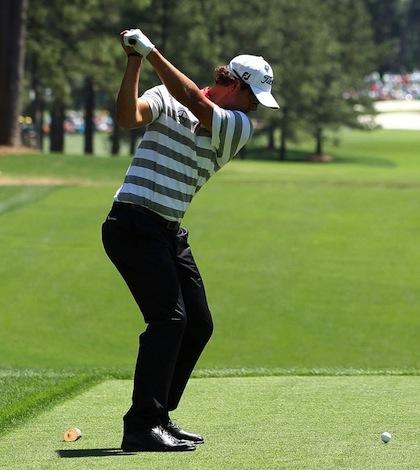Struggling with Your Backswing? You’re Not Alone
In the world of golf, mastering the perfect swing is often seen as the holy grail of improvement. Yet, many players find themselves grappling with a fundamental aspect of the game: the backswing. Whether you’re a seasoned golfer or just starting, a full and effective backswing can make a significant difference in your performance on the course. Experts estimate that nearly 70% of amateur golfers struggle to achieve the fluidity and range of motion necessary for a complete backswing, often leading to inconsistent shots and frustration. This article delves into the common challenges players face, examines the underlying causes of backswing struggles, and explores techniques and tips to help golfers optimize their swing mechanics. If you’ve ever questioned your ability to execute a proper backswing, read on to find insights that could elevate your game to new heights.
Understanding the Common Obstacles to Achieving a Full Backswing
Achieving a complete backswing is essential in many sports, particularly golf, where the mechanics of your swing can make or break your game. However, numerous factors can hinder your ability to reach that full range of motion. Physical limitations such as flexibility and strength play a significant role. A lack of overall shoulder mobility can lead to a truncated backswing, while poor core strength may impede your ability to maintain balance during the swing. Additionally, conditions like tight hamstrings or a rigid back can restrict your hip movement, creating a chain reaction that restricts your upper body rotation.
Moreover, mental barriers can significantly affect one’s performance. Anxiety about making a mistake can cause players to unconsciously shorten their swing. The habit of rushing through the backswing in pursuit of speed can result in a hurried and incomplete motion, ultimately compromising the entire swing’s effectiveness. Players must also consider equipment issues; using a club that does not suit one’s physical stature or swing style can exacerbate these challenges. To overcome these obstacles, individuals are encouraged to engage in targeted flexibility exercises, practice mindfulness techniques to alleviate pressure, and ensure their equipment complements their body mechanics for a more effective backswing.
Expert Tips and Techniques to Enhance Your Backswing Efficiency and Power
For golfers looking to improve their backswing, a few key techniques can substantially enhance both efficiency and power. Begin by ensuring proper alignment; allowing your feet, hips, and shoulders to work in harmony sets the stage for a fluid motion. Focus on stability during your setup, as this will help maintain balance throughout the swing. When initiating the backswing, use your arms in conjunction with your torso, engaging your core to facilitate a strong coil without excess lateral movement. Consider these essential tips:
- Rotate rather than sway: Maintain a centered position to avoid unnecessary shifting.
- Limit arm lift: Focus on keeping your arms low during the initial phase to build tension.
- Practice slow motion: Rehearsing your backswing at a slower pace helps engrain the correct mechanics.
Another crucial aspect of backswing efficiency lies in your grip and wrist hinge. A comfortable grip allows more freedom of movement, while a proper wrist hinge can add extra leverage to your swing. Experiment with your grip pressure; holding too tightly can restrict fluidity and lead to tension. Additionally, consider the following points to optimize your technique:
- Feel for the hinge: Practice creating a natural wrist angle while transitioning into the downswing.
- Drill your routine: Integrate practice sessions focusing solely on your backswing.
- Video analysis: Recording your swing can help identify areas for improvement.
The Conclusion
As we conclude our exploration into the challenges of achieving a full backswing, it’s clear that this crucial element of your golf game can be both a physical and psychological hurdle. Understanding the common pitfalls, such as posture, technique, and mental blocks, is the first step toward improvement. Expert advice and tailored exercises can make a significant difference in your performance on the course, helping you unlock the power and accuracy that a proper backswing can provide. Whether you’re a novice golfer or an experienced player looking to refine your approach, the journey toward a more effective game begins with a commitment to overcoming this fundamental aspect of your swing. Stay tuned for more tips and insights into enhancing your golf skills as we continue to cover the latest trends and techniques in the world of golf.








